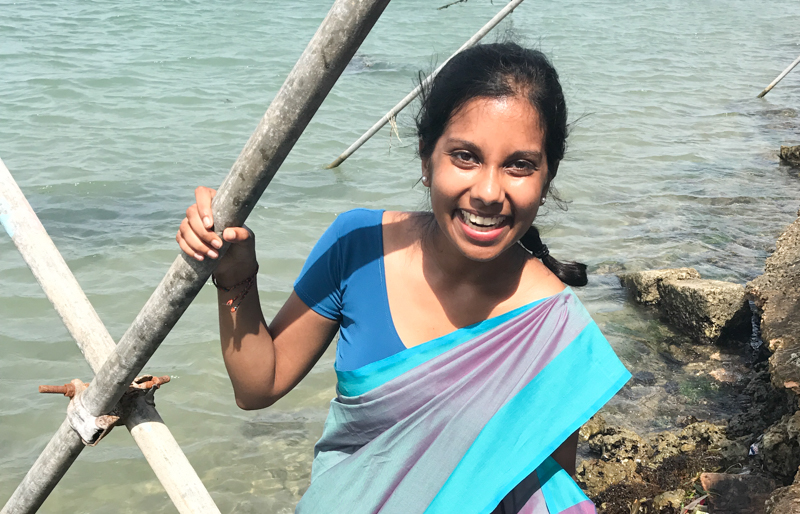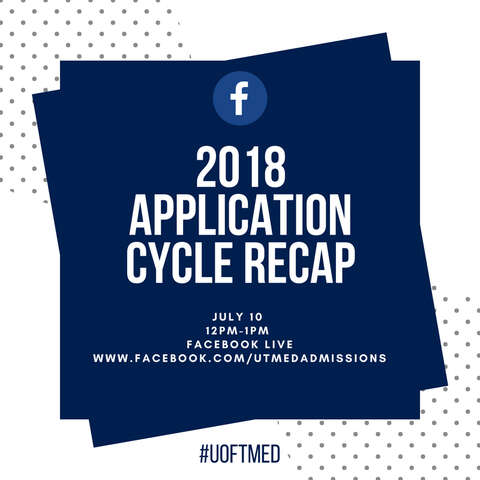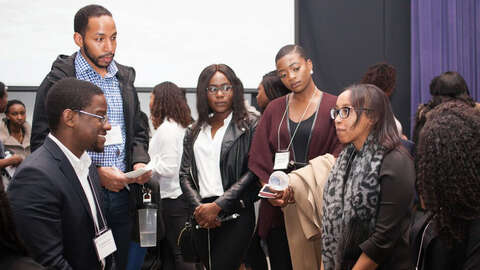Facebook Live - 2018 Application Cycle Recap
Google map
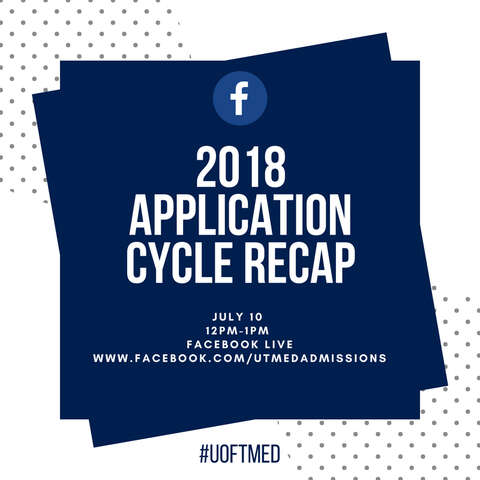
What was the competitive GPA range in the last application cycle? What types of applications proceeded to full file review? What happens after the interview?
If these look similar to questions you've pondered, join us for a Facebook Live session where our admissions team reflects upon the last application cycle.
We will open up the floor to Q&As - so come prepared! If you are unable to attend, the session will be archived on our Facebook and YouTube pages.

Optimize this page for search engines by customizing the Meta Title and Meta Description fields.
Use the Google Search Result Preview Tool to test different content ideas.
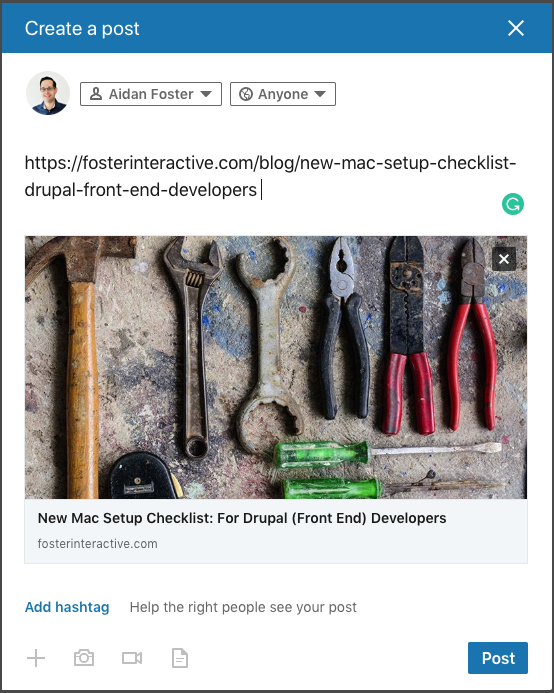
Select a Meta Image to tell a social media platform what image to use when sharing.
If blank, different social platforms like LinkedIn will randomly select an image on the page to appear on shared posts.
Posts with images generally perform better on social media so it is worth selecting an engaging image.
Facebook Live: 2018 Application Cycle Recap
Google map
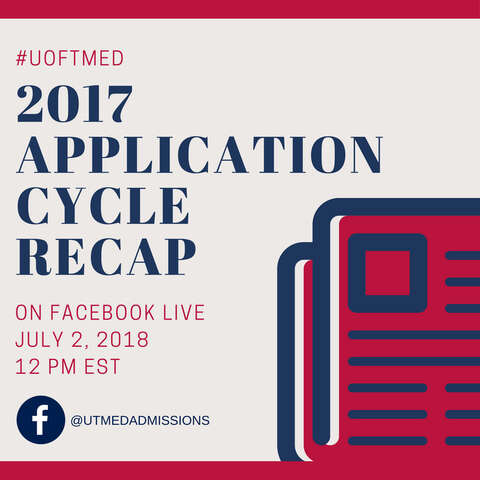
Curious about our previous 2018 MD applications?
Take a look below as our admissions and registrar team recap the 2018 MD Program application cycle. The video will cover a brief overview of the cycle, followed by a Q & A.
Make sure you're following us on Facebook to see our other Facebook Live videos!

Optimize this page for search engines by customizing the Meta Title and Meta Description fields.
Use the Google Search Result Preview Tool to test different content ideas.

Select a Meta Image to tell a social media platform what image to use when sharing.
If blank, different social platforms like LinkedIn will randomly select an image on the page to appear on shared posts.
Posts with images generally perform better on social media so it is worth selecting an engaging image.
Housing at UTM
Over the course of the summer, we will be posting Transition Blog posts to support our incoming students as they transition to life as a medical student at U of T.
If you have been admitted into the UTM campus, there are many housing options available to you. Some students choose to live on campus, off campus in Mississauga, or even off campus in Toronto. As much of your learning in the first and second year of medical school happens on campus, living in residence tends to be a favoured choice for UTM students.
On-Campus Housing
UTM students who live on campus live together in townhouses - meaning your roommates and next door neighbours will be your fellow classmates. Students often find this beneficial, as you will all experience times of study and celebration in tandem.
Please visit our Housing and Residence page for instructions for applying for residence on the Mississauga campus.
You are also able to visit UTM Student Housing & Residence Life.
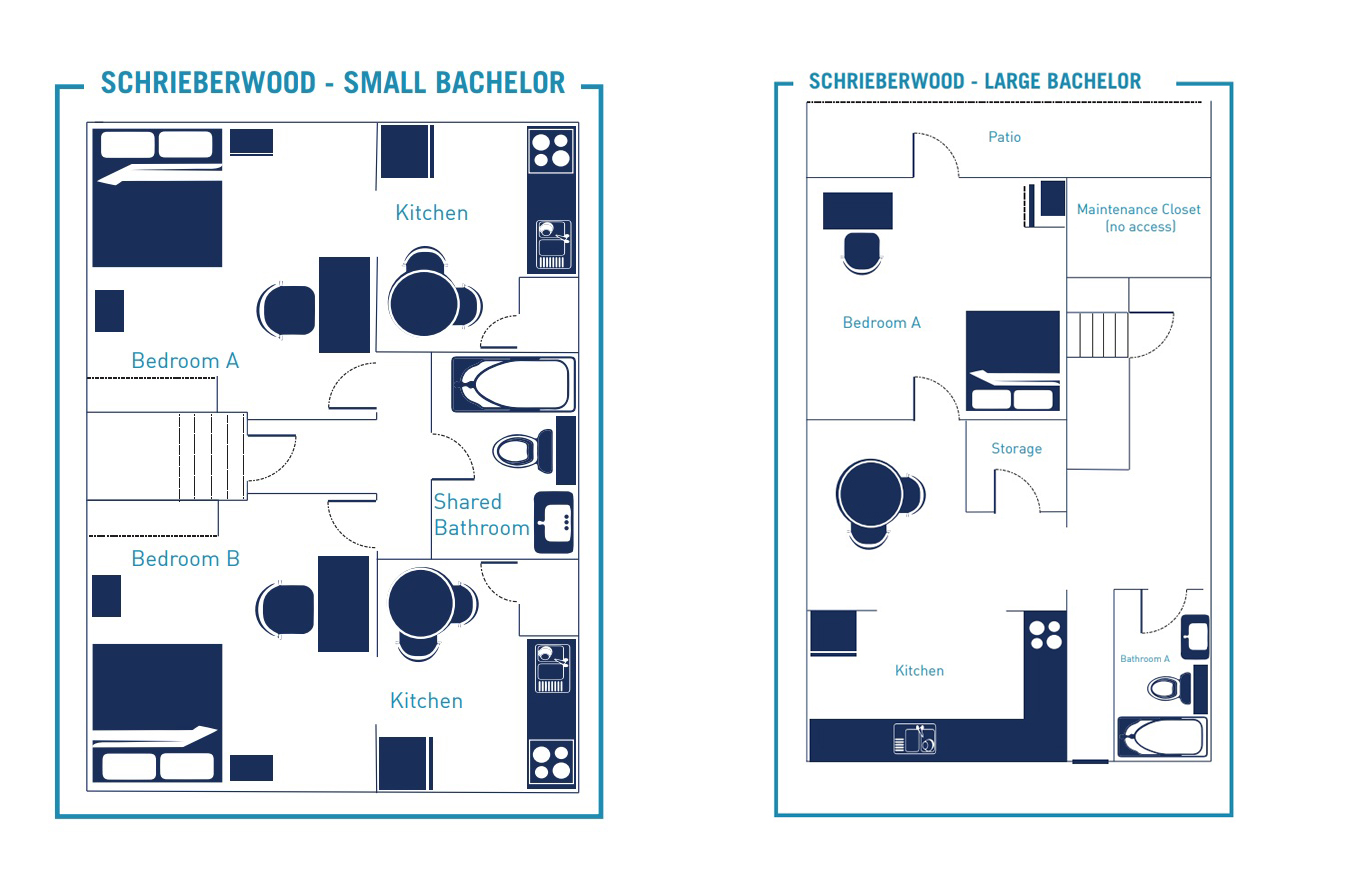
Off-Campus Housing
There are many neighbourhoods in Mississauga in close proximity to campus. The University of Toronto Mississauga has put together a resource guide with the popular apartment complexes for students, as well as the major neighbourhoods that students may choose to live.
- If you are looking for a roommate or a place to live, you can check out the University of Toronto Housing Services Registry.
- Make sure you are part of the 2T4 Facebook group, as incoming students will often connect there to get an apartment together
- Living off-campus, you can expect to pay on average between $800 - $1200 a month for a 1 bedroom apartment
- Public transportation drops off and picks up right on campus, making campus accessible from a variety of neighbourhoods
Below is a list of the main neighbourhoods where UTM students who choose to live off-campus reside, complete with their approximate proximity to campus (as per Google Maps estimation)
Proximity to campus: ~ 40 minutes by public transit
Highlight: Waterfront location and community atmosphere
Proximity to campus: ~ 20 minutes by public transit
Highlight: Historic village with a downtown feel
Proximity to campus: ~27 minutes by transit
Highlight: Central location close to many amenities
Proximity to campus: ~25 minutes by transit
Highlight: Located in downtown Mississauga - close to amenities, and great if you prefer city life!
Proximity to campus: ~34 minutes by transit
Highlight: Close to amenities, 15 parks and trails, and houses the Credit Valley Hospital
Proximity to campus: ~6 minutes
Highlight: The closest neighbourhood to campus, and great for nature lovers (so many parks and trails!)
General Tips
- Make use of on-campus resources! You are able to make an appointment with Housing Services to discuss your options for finding a place to live
- Know your rights and responsibilities as a tenant
- Stay aware in your housing search. Don't wire money to a landlord you haven't met, get agreements in writing, carefully review your lease and more!
- Check the bedbug registry to make sure the building you are interested in doesn't have an issue
- Check out resources at from the Office of Student Life, especially the roommate compatibility list, off-campus housing terms, and their step-by-step housing search guide

Optimize this page for search engines by customizing the Meta Title and Meta Description fields.
Use the Google Search Result Preview Tool to test different content ideas.

Select a Meta Image to tell a social media platform what image to use when sharing.
If blank, different social platforms like LinkedIn will randomly select an image on the page to appear on shared posts.
Posts with images generally perform better on social media so it is worth selecting an engaging image.
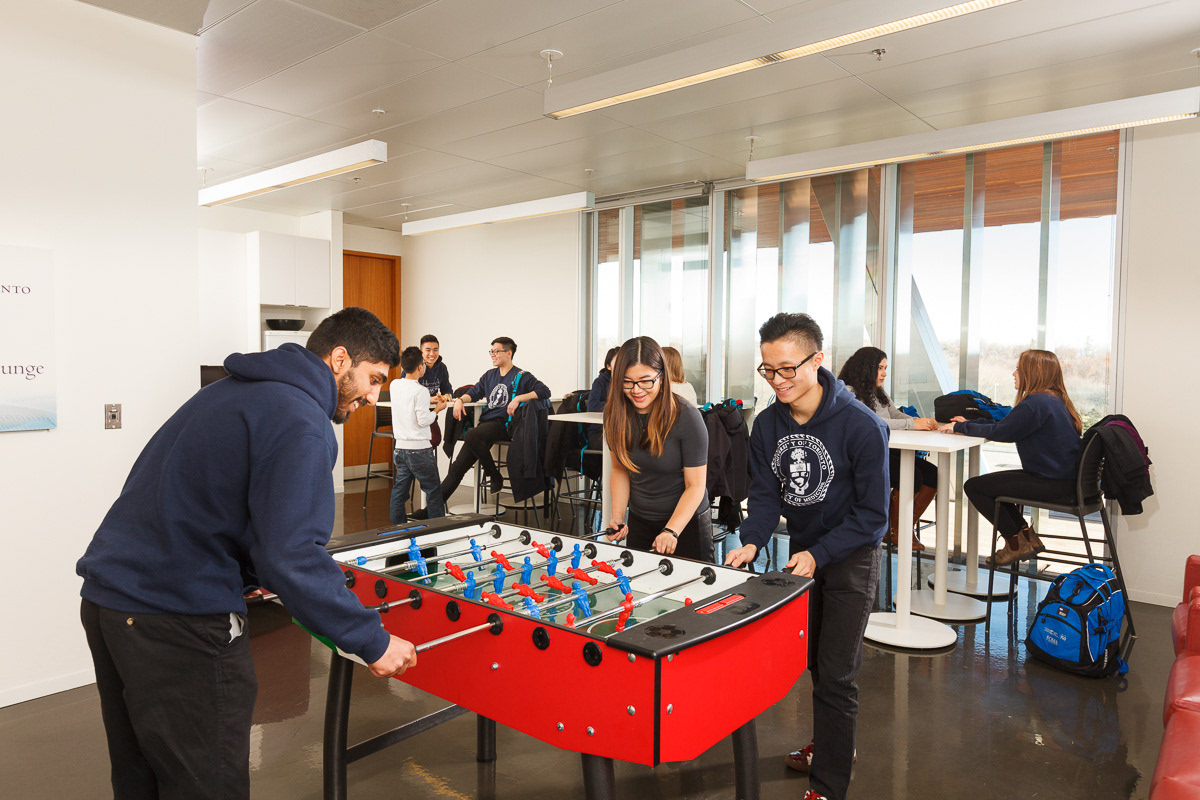
Out of province student experiences
Out of province and international students are critical to strengthening the cultural fabric of the MD Program. Students from different places bring different experiences and perspectives into the program. We look at all domestic applicants equally - a student from Ontario has the same chance as getting into the MD Program as a student from British Columbia or Newfoundland. We simply accept the overall most competitive applicants into the program.
What is student life like as an out of province medical student at U of T? Our Social Media Ambassadors from the class of 2T1, Verina Hanna and Kimberly Young, interviewed their classmates to find out.
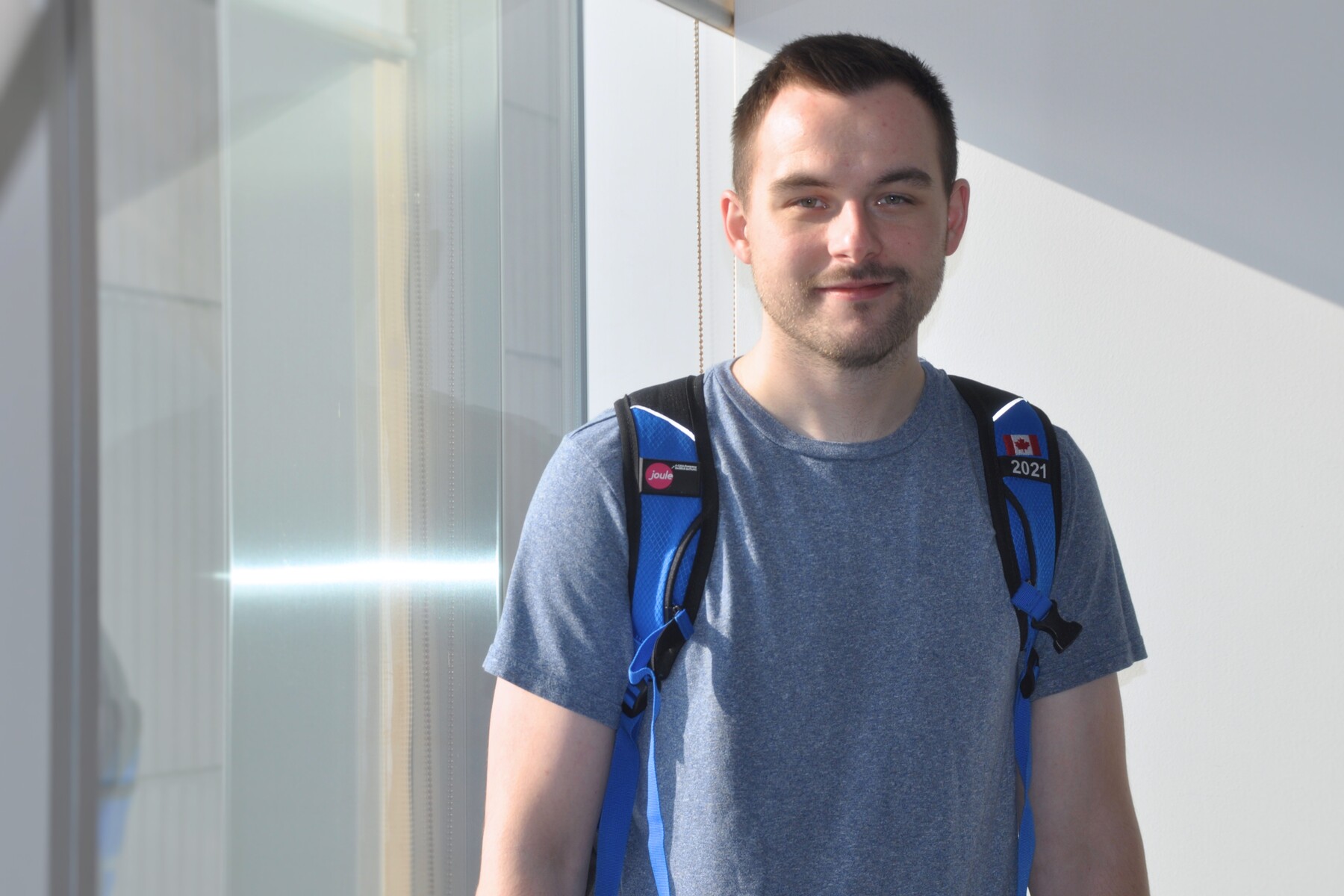
“My entire family is back in Alberta, my fiancé is in Saskatoon, and I’m out here in Toronto. It hasn’t been easy to pick everything up and move across the country, especially alone, and I’d never even been to Ontario before my interview at the University of Toronto. I chose to come to Toronto because of the amazing hospitals and learning opportunities that are available here, but it has still been an adjustment. I went through a bit of culture shock when I arrived, Toronto is a lot bigger than the town I grew up in. But really, no matter where you are in Canada, there are more similarities than there are differences; the people are very friendly, and Tim Horton’s still sells coffee. Despite school being quite busy, I was able to make friends quickly which helped to ease my transition to medical school. The Faculty of Medicine has been very supportive, and the staff are able to help you out with nearly anything you could imagine. It has been a great experience so far and I am looking forward to the next three and a half years. There will never be a substitute for my family, but my colleagues have become a second family for me and that’s better than I could’ve hoped for.”
- Dakoda Herman, Alberta
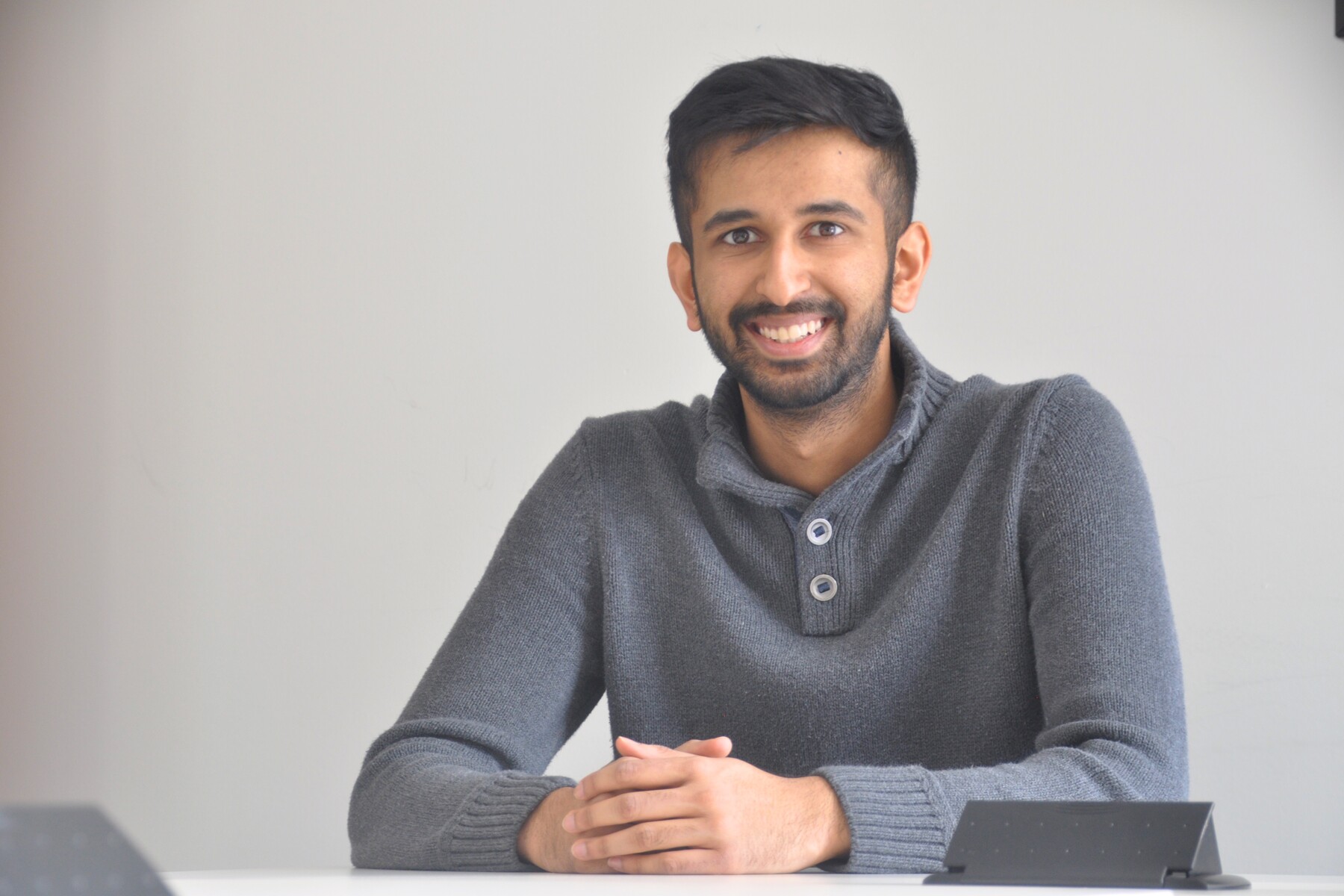
“I would say that my favourite thing about Mississauga has been the overwhelming sense of community that I have felt since joining MAM. I am originally from Halifax, NS, and completed my undergraduate degree at McGill University in Montreal, so I did not know many people coming into my first year of medical school. However, our class quickly became close through our many classes, labs, and group sessions together. Everyone is friendly and supportive of one another, which has made the transition to medical school, and to a new city, much easier for me. Additionally, the faculty and staff have been warm and welcoming right from orientation week. This community and network of support has made MAM my home away from home in Mississauga.”
- Amrit Sampalli, Nova Scotia
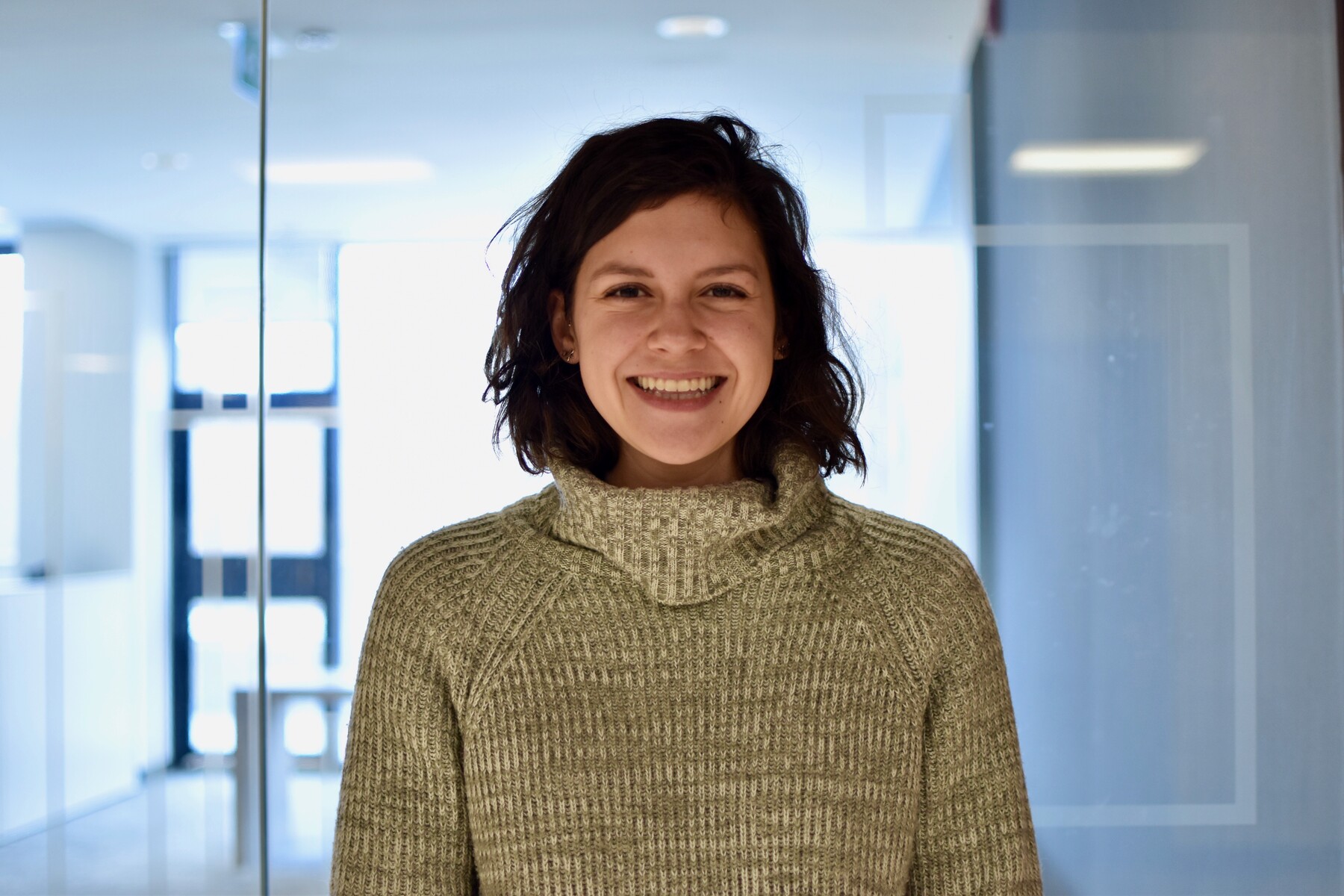
"I was never a big phone person until I moved away from home, but I absolutely love playing with my nephews, studying with my partner, or crashing family dinner parties over FaceTime. My friends and I have also gotten into the habit of sending each other voice notes when we’re missing each other. It’s so lovely to actually hear someone’s voice rather than texting all the time! As my classmates know, sometimes these phone calls can feel stressful when I’m trying to balance everything that’s happening in my life in Toronto, but they always bring me so much joy and I’m so grateful to have such a strong long distance support network. The last thing I’ll say is if you are really missing home, there are always flights, carpools, and trains that can be coordinated for impromptu trips. I’ve flown home just for a weekend more than once and even though it’s a short visit, it’s really comforting to know it exists as an option when I’m missing home."
- Asia Van Buuren, British Columbia

Optimize this page for search engines by customizing the Meta Title and Meta Description fields.
Use the Google Search Result Preview Tool to test different content ideas.

Select a Meta Image to tell a social media platform what image to use when sharing.
If blank, different social platforms like LinkedIn will randomly select an image on the page to appear on shared posts.
Posts with images generally perform better on social media so it is worth selecting an engaging image.
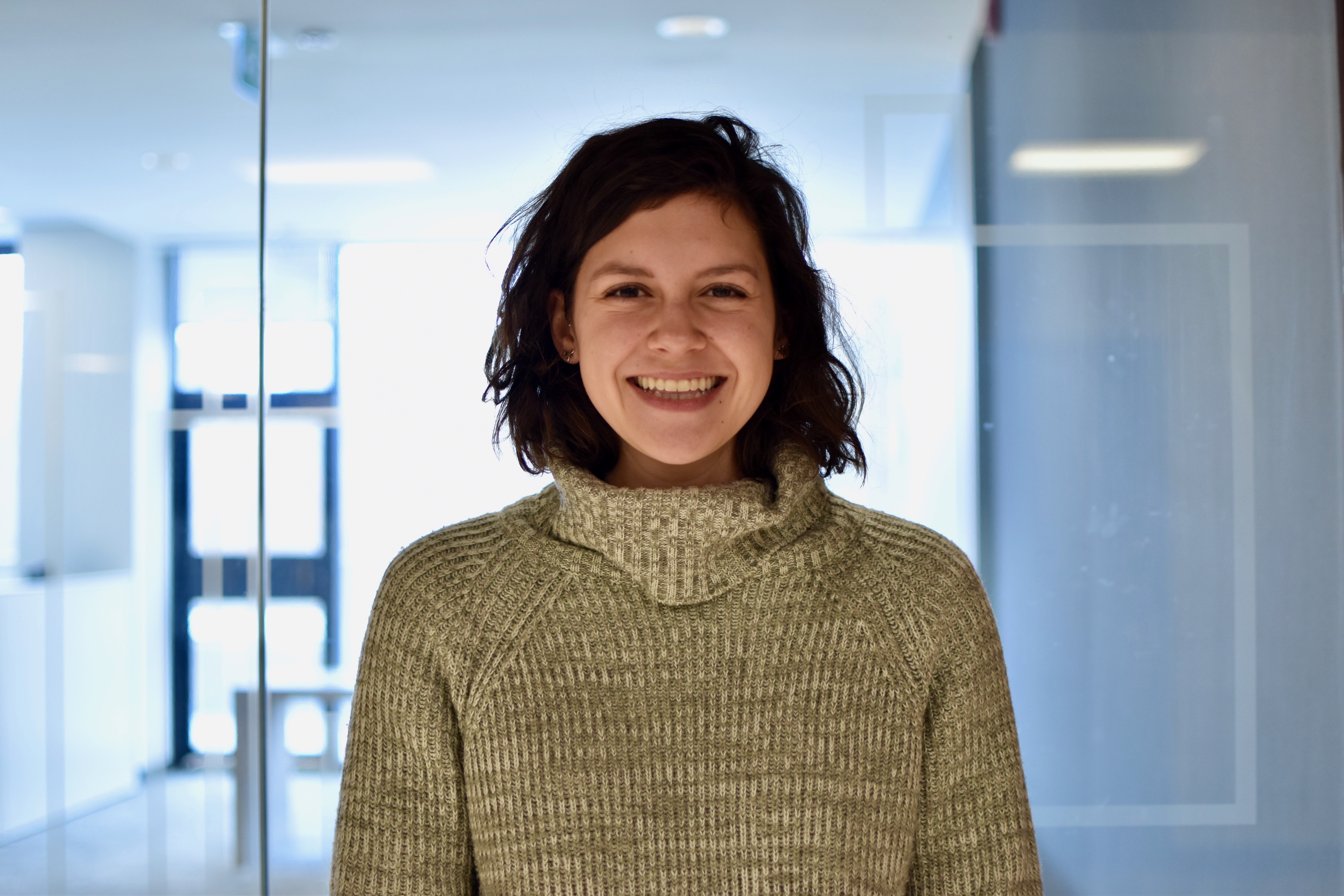
Application 101: a few Helpful Pointers
Medical school application season is officially underway! You are now wrapping up your application on OMSAS! We understand that this time can feel overwhelming, so we have developed some tips for you to consider throughout the application cycle.
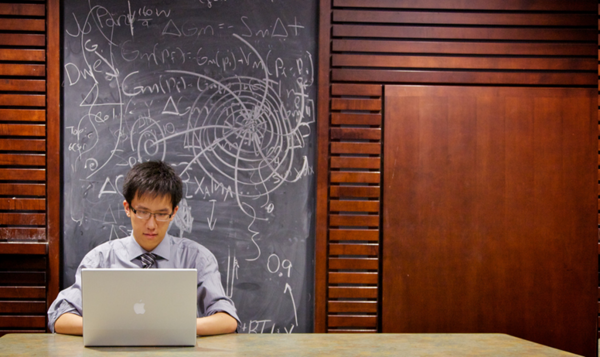
- Make sure that you carefully read through our admissions requirements to ensure that they are all met. Applicants must meet all of these requirements for their applications to proceed to the next round.
- Read through the OMSAS guidelines thoroughly, and make sure everything is submitted by the deadline. Check in with your referees to ensure they have submitted their letters by the deadline too!
- Not sure about your prerequisites? We have a webpage for that. Check our listings.
- When choosing your referees, ask them if they feel comfortable giving you a positive and objective reference. Communicate directly with your referees what we are looking for in the letter (hint: over the course of your 3 letters of reference, make sure the four clusters are covered!).
- Ask people to read over your application, to ensure there are no spelling or grammar mistakes, and that your writing is clear and concise. Have people you look up to – such as mentors and professors read over your application, but also invite others to read your application. If you can make a complicated issue understandable to someone who is not familiar with it – you are probably on the right track.
- Give yourself time. Allow your ideas to marinate for a while, and then come back to them. Oftentimes you will think of a new way of wording something, or a more thoughtful insight when you have the time to come back and re-read your application. Tip - the essay limit is 250 words (not 2000 characters).
- Make use of the Academic Explanations Essay if you need to. We understand that life is not always smooth – so please feel comfortable using this essay to convey these situations to us. It can give the admissions committee a better picture of your application and ensures we do not overlook strong applicants who were affected by circumstances beyond their control. It is also useful to use this essay if you have taken a co-op, PEY, transfer credits etc. These things are not always clear on your transcript, so it is best to let us know. FYI - it is not limited to 250 characters.
- Don’t believe everything that you read (unless it comes from us!). If you have a pressing question, get in touch with us at the Enrolment Services office directly. It can be tempting to go on forums and blogs to get your answers, but oftentimes this is how rumours spread. We are always happy to clarify for you!
- Building on the above point, focus on your application. There is no magic package we are looking for in our applicants. Review the four clusters, and focus on how your activities and achievements exemplify them. Each person has a different story and background that we want to know about. Don’t psych yourself out comparing yours to others. What makes your application strong?
For more admissions tips and guidance, check out our FB Live videos. We recorded a few over the summer to answer FAQ's about the application.

Optimize this page for search engines by customizing the Meta Title and Meta Description fields.
Use the Google Search Result Preview Tool to test different content ideas.

Select a Meta Image to tell a social media platform what image to use when sharing.
If blank, different social platforms like LinkedIn will randomly select an image on the page to appear on shared posts.
Posts with images generally perform better on social media so it is worth selecting an engaging image.

IGNITE to Empower Future MD Students
CoS works to increase the number of medical students who are Black, Indigenous, Filipino or economically disadvantaged. It helps link students from these underrepresented communities to volunteer opportunities, Biostats enrichment courses, the MCAT Student Support Program and application support for students applying to medical school or for research positions. The program also offers mentorship by medical students and doctors at various stages of their training and careers.
“The conference really crystalizes the resources CoS links students to” says Ike Okafor, Senior Officer, Service Learning and Diversity Outreach in the Faculty of Medicine’s MD program.
The conference content was developed in consultation with CoS members and current physicians who understand the intricacies of the application process and the rigours of medical school training.
There are now more than 1,000 CoS members and a dozen student-led chapters across the province and beyond. For example, teams at Ottawa, Western, U of T, Queen’s University and McMaster performed mock interviews with CoS members to help candidates prepare for their medical school interviews, a critical step in a rigorous process. As well, at an administrative level, Okafor collaborates with colleagues at other medical schools including McGill, Dalhousie and Harvard to obtain student support in the application process.
The conference will feature talks about the Ontario Medical School Application Service (OMSAS), the Medical College Admissions Test (MCAT), tips for interviews and securing references and information about admissions to medical schools in the United States and Caribbean.
“We want to help eliminate barriers and support students in pursuing their goal to attend medical school, regardless of where they end up applying,” says Okafor. “We’ve been able to help students who have accepted offers from medical schools across North America.”
Aspiring medical students will have the opportunity to meet MDs who embody their dreams. Participants will also be able to connect with current medical students, admissions staff and community organizations. The day-long event will also provide a chance for students to network with physicians working in a variety of specialities.
“There is a thriving community of physicians of Afro-Caribbean and Indigenous descents,” says Dr. Renée Beach, dermatologist and outreach lead for the Black Physicians’ Association of Ontario. “A lot of the time we’re working hard seeing patients and doing research, but it’s really important for us to take some time to connect with who we hope will become the future generation of physicians.”
Listen to Dr. Beach on CBC’s Metro Morning
Last year’s conference attracted about 200 participants. Attendance at this year’s event is expected to be even higher, with students from as far as Ottawa and London planning to attend.

Optimize this page for search engines by customizing the Meta Title and Meta Description fields.
Use the Google Search Result Preview Tool to test different content ideas.

Select a Meta Image to tell a social media platform what image to use when sharing.
If blank, different social platforms like LinkedIn will randomly select an image on the page to appear on shared posts.
Posts with images generally perform better on social media so it is worth selecting an engaging image.
Erin Howe

Foundations Curriculum Student Experience Blog: The Blanket Exercise
Last week, I had the amazing experience of completing the blanket exercise with my classmates in Mississauga. The exercise is an interactive learning experience that teaches Indigenous history. While standing on blankets representing the lands that Indigenous peoples have lived on since time immemorial, we learned about 500 years’ worth of history from an Indigenous perspective.
Over the first hour, we saw how European colonizers, unfamiliar diseases and colonialist policies decimated the Indigenous population and then tucked Indigenous peoples into tiny, largely unprofitable land tracts called reserves. For me, this exercise was hugely emotional and intellectually challenging.
Before medical school, I lived and worked in Saskatchewan and Manitoba, in and out of Indigenous communities. There never was a moment when I didn’t see their presence physically, spiritually and politically.
But when I was growing up in Kitchener-Waterloo, I didn’t have much interaction with Indigenous people or exposure to their perspectives beyond fundraising in my church for the youth in Attawapiskat and history lessons about Indigenous and settler clashes.
The blanket exercise hammered home how oblivious I have been to Indigenous people and allowed me and my classmates to begin preparing to serve them as future healthcare providers.
It was especially striking to see how much harm Indigenous people have felt through a loss of connection with their land. As an immigrant, my relationship with the place I call home is complicated — this isn’t where my ancestors are from, but I don’t feel I fully belong where they lived, either. It can be difficult for me to contemplate a connection to land so deep, far beyond what I can imagine. The blanket exercise allowed us to experience a tiny, tiny bit of the emotional devastation felt by Indigenous people who were torn from the land their ancestors have called home for forever.
As a Canadian and a future physician, I think this exercise will help me grow in ways that will allow me to better serve Indigenous people in my medical practice. One of the things that makes the Foundations Curriculum so striking is how it acknowledges how much our health is impacted by factors outside of the control of physicians. History, intergenerational trauma and ongoing struggles and sacrifices will have had long-lasting impacts on many of my Indigenous patients. It’s important that, as a medical student, I acknowledge that. As a physician, I will have opportunities to advocate with these same people and communities for better.
My classmates and I completed our blanket exercise, but perhaps what I should have said is that we began to deepen our understanding. I hope that the thoughts and reflections inspired by the experience lead to an ongoing search for reconciliation.

Optimize this page for search engines by customizing the Meta Title and Meta Description fields.
Use the Google Search Result Preview Tool to test different content ideas.

Select a Meta Image to tell a social media platform what image to use when sharing.
If blank, different social platforms like LinkedIn will randomly select an image on the page to appear on shared posts.
Posts with images generally perform better on social media so it is worth selecting an engaging image.
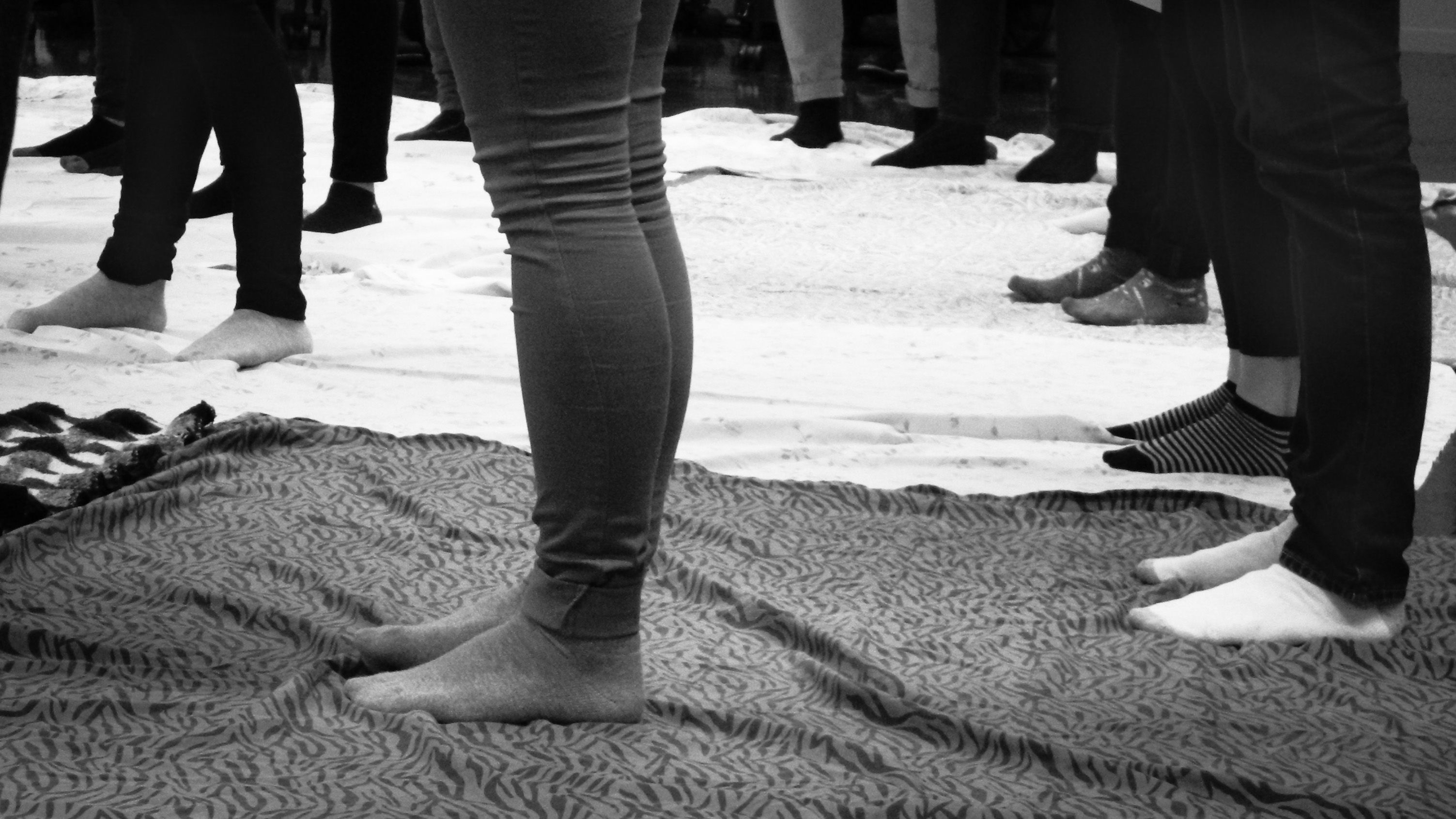
Addressing Unique Patient Needs with Technology
Jason Jaewoo Park wants to be a doctor who can impact patient outcomes with technology.
“When I entered medical school, I wanted to learn more about medical devices that are essential for providing high-quality care,” said Park, a second-year MD student at the University of Toronto. “As a future physician, I want to help find solutions to shortcomings in the technology we use to provide the best possible care for our patients.”
Starting this fall, Park will be among the first cohort of seven U of T MD students to pair their full-time medical education with training in biomedical device design through a part-time Master of Engineering (MEng) program offered by the University’s Institute of Biomaterials & Biomedical Engineering (IBBME).
The MD-oriented version of this program, developed by IBBME professors Julie Audet, Christopher Yip and the Faculty of Medicine’s Dr. Marcus Law, enables medical students to learn more about how biomedical devices are created and brought to market through a series of courses in biomedical sciences, engineering technology and commercialization. It also includes an applied internship on a schedule that compliments the MD curriculum.
Some of the proposed projects for internships include evaluating mechanical compression of live tissue in minimally-invasive surgery, and the development of a 3D heart tissue model microfluidic platform for cardiovascular health research.
“With a focus on the design and commercialization of biomedical devices, our MD students will engage in applied design challenges to tackle medically relevant issues and gain first-hand experience of the industry,” said Law, an associate professor of family medicine and the director of foundations for the MD program at U of T. “This experience is extremely enriching for our students, and open the doors for future career options in advancing health care.”
Park agrees. He started his internship earlier this year at 3D4MD, a Toronto-based firm that makes 3D-printed medical tools such as surgical instruments that can be fabricated on site. This is particularly useful for challenging locations in the world, such as disaster zones or remote sites, and for space applications to treat ill or injured astronauts.
“The projects I’m working on are aimed at helping patients with disabilities whose therapy needs are not addressed by current products,” said Park. “Additionally, we hope to help patients who are not able to access suitable assistive devices because they are too expensive by developing a more cost-effective, 3D-printed alternative.”
The program also fosters collaboration between engineering and medical professionals.
“There is a unique opportunity to have both engineering and medical students in the same classroom to share complimentary perspectives that will help to identify and address unmet health-care needs,” said Audet, who is also the vice-dean of graduate studies for the Faculty of Applied Science & Engineering. “I am grateful to be a part of the development team for this interdisciplinary initiative that will help advance care for unique human health challenges.”

Optimize this page for search engines by customizing the Meta Title and Meta Description fields.
Use the Google Search Result Preview Tool to test different content ideas.

Select a Meta Image to tell a social media platform what image to use when sharing.
If blank, different social platforms like LinkedIn will randomly select an image on the page to appear on shared posts.
Posts with images generally perform better on social media so it is worth selecting an engaging image.
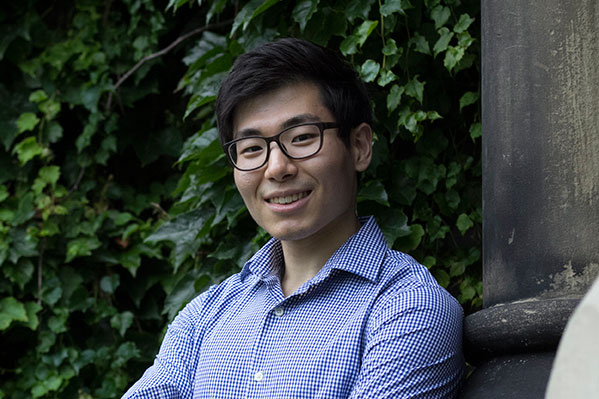
Foundations Curriculum Student Experience Blog: Bringing the Lessons Home
 When I was applying to U of T, I remember browsing the Faculty’s website and finding a list of potential summer research opportunities available to medical students. One of those was a placement at a hospital less than 10 kilometres away from my father’s home village in Sri Lanka. As a child growing up in Waterloo, Ontario, I had mostly shied away from getting to know my Sri Lankan heritage. But something inside me wanted to explore it now. This summer, I found myself on a plane to Colombo, excited to collect data as part of a global health study on therapies and complications in Sri Lankan patients with thalassemia — an inherited blood disorder that causes the body to make an abnormal form of hemoglobin, a protein that carries oxygen in the blood. Patients with this disorder often need regular blood transfusions and can also experience cardiovascular complications, diabetes and other serious endocrine disorders.
When I was applying to U of T, I remember browsing the Faculty’s website and finding a list of potential summer research opportunities available to medical students. One of those was a placement at a hospital less than 10 kilometres away from my father’s home village in Sri Lanka. As a child growing up in Waterloo, Ontario, I had mostly shied away from getting to know my Sri Lankan heritage. But something inside me wanted to explore it now. This summer, I found myself on a plane to Colombo, excited to collect data as part of a global health study on therapies and complications in Sri Lankan patients with thalassemia — an inherited blood disorder that causes the body to make an abnormal form of hemoglobin, a protein that carries oxygen in the blood. Patients with this disorder often need regular blood transfusions and can also experience cardiovascular complications, diabetes and other serious endocrine disorders.
While I certainly learned a lot about thalassemia during our weeks of chart review in the first year of the Foundations curriculum, I was now gleaning new lessons on the streets of Colombo, the city where I worked. As people with a challenging chronic disease, thalassemia patients have many interactions with healthcare workers. The charts we reviewed had extensive documentation of the frequent visits. While reading these charts, I often discovered that I had greatly underappreciated the importance of ethnicity, culture and race in medicine.
In the first year of medical school, the Foundations curriculum repeatedly emphasizes in lectures and small group seminars the importance of cultural safety. During my international placement, I inadvertently stumbled into a real-life lesson. In Sri Lanka, there’s a common misconception that you’re not related by blood to your maternal family. People may marry their cousins or others in their home villages who might also be related.
Thalassemia is an inherited genetic disorder and if both prospective parents carry genes associated with the disorder, they’re more likely to conceive a child with thalassemia. While I was in Sri Lanka, I learned about public health campaigns encouraging potential spouses to get genetic testing prior to marriage, so as to pre-emptively decrease the likelihood of children being born with thalassemia. It was a living example of the lessons taught in first year.
Now that I’m home, I intend to keep questioning my own assumptions about culture and learning to respect our patients’ cultural diversity.
I also found myself watching physician-patient interactions in the hospitals where I worked. To that point, much of my clinical skills training emphasized the nuances of communication. Though I often wished we’d spent extra time on more tangibly clinical aspects of medicine, my time in Sri Lanka allowed me to appreciate how far good communication can go. An unusually severe outbreak of dengue forced physicians to admit many more patients than they had space to accommodate. The physicians used masterful listening skills and nonverbal communication to comfort patients who didn’t even have a bed to themselves.
In a similar vein, one of my own goals for the summer was to improve my pitiful Sinhala. I’m grateful for the opportunity to spend so much time using my second language, though I never quite got used to mentally rehearsing everything I wanted to say in advance. Nor did I welcome the daily questions about my accent. However, this experience gave me a huge appreciation of what many immigrants in Toronto and Canada must brave on a daily basis. Many of our patients, like my parents, interact with most people in a language that isn’t their mother tongue. I have so much respect and admiration for their courage.
I intend to keep exploring opportunities to incorporate what I learned this summer into my budding medical education. U of T has a long history of its physicians being involved in global health. Maybe global health will be part of my story, too.
This student experience article expresses the views of Sanasi Jayawardena and is not meant to be representative of the entire student experience, nor represent the MD Program.

Optimize this page for search engines by customizing the Meta Title and Meta Description fields.
Use the Google Search Result Preview Tool to test different content ideas.

Select a Meta Image to tell a social media platform what image to use when sharing.
If blank, different social platforms like LinkedIn will randomly select an image on the page to appear on shared posts.
Posts with images generally perform better on social media so it is worth selecting an engaging image.
Sanasi Jayawardena, Class of 2T0
